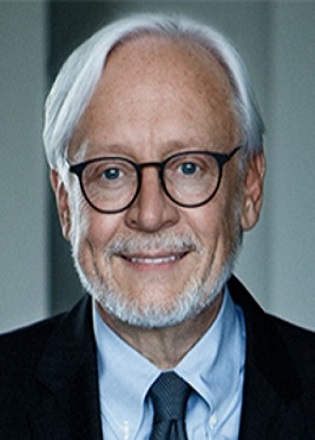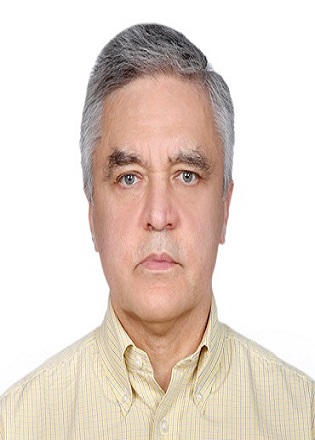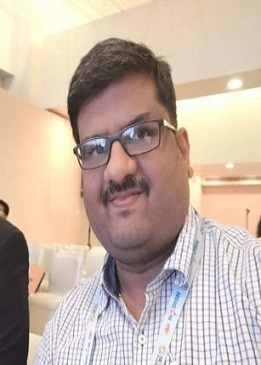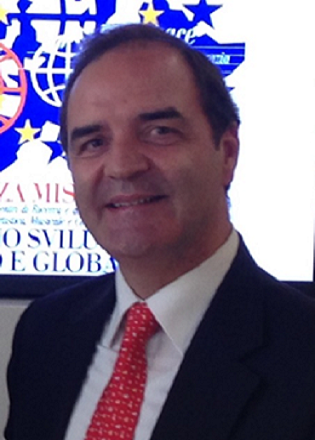Scientific Program
Keynote Session:
Title: Understanding chronic pain: The mind-body connection
Biography:
James F Zender is a clinical and forensic psychologist and psychotherapist whose practice focus is evaluating and treating patients recovering from auto and occupational injuries involving PTSD, TBI, depression and chronic pain.
Abstract:
Title: Title: Harnessing the understanding and advancement in neurology and neurosurgery
Biography:
Richard Klein, DDS exclusively treats OSA and TMD. He has not practiced routine dentistry for 24 years. He has been teaching St. John Hospital residents monthly lectures for 15 years and is a clinical professor at Michigan State Osteopathic Medical School. He has diplomat status in Obstructive Sleep Apnea from the American Sleep and Breathing Academy and the American Academy of Craniofacial of Pain management, with TMD Mastership from both ICCMO and AACP and fellowship in the Royal Society of Health (England). He has lectured in 14 countries, is published in multiple journals and has authored a chapter on TMD in the Anthology of Craniomandibular Orthopedics Vol IV. He served as clinical investigator, a study utilizing lasers for dentistry and pain management in 1988 and has been asked to speak in Washington DC to the Department of Transportation, the Federal Motor Carrier Safety Association as well as to US Senators and the US Congress.
Abstract:
Title: The wellness purpose connection: Understanding how eating and exercise leads to happiness and purpose in life
Biography:
Sheron Brown is the scholar practitioner and the founder of Sweet Eden, a wellness education company that works primarily with busy professionals to bring harmony between their personal and professional lives and improve their overall wellbeing. She reinvented her previous experiences in leadership development. She grew from helping leaders to solely focus on workplace performance to transforming their lives with a wholistic perspective. She has worked as an independent consultant and coach to school leadership teams using her experiences as a brain-based coach to help leaders transform. She holds a certificate for using the Insight Learning Foundation’s personality assessment system, a Results Coaching System certificate, a certificate for integrative health coaching and is a trained yoga teacher. Furthermore, She holds her PhD in Professional Studies in Education from Capella University.
Abstract:
Title: Revise the caesareans, save women lives
Biography:
Christos Tsitlakidis has graduated from Hellenic Aristotle University School of Medicine. He is a consultant Obstetrician and Gynaecologist in Pinderfields Hospital, MidYorkshire NHS Trust, United Kingdom. He has published more than 6 papers in reputed journals in UK and abroad and has been member of the RCOG.
Abstract:
Title: Personalized & precision medicine (ppm) as a model of healthcare services of the next-step generation to secure the national stability and the biosafety
Biography:
Sergey Suchkov was born in the City of Astrakhan, Russia, in a dynasty of medical doctors, graduated from Astra-khan State Medical University and was awarded with MD. Then maintained his PhD and Doctor’s Degree. And later was working for Helmholtz Eye Research Institute and Moscow Regional Clinical Research Institute (MONIKI). He was a Secretary-in-Chief of the editorial board, Biomedical Science, an international journal published jointly by the USSR Academy of Sciences and the Royal Society of Chemistry, UK. At present, he is: (i) a director, Center for Personalized Medicine, Sechenov University, (ii) Chair, Dept for Translational Medicine, Moscow Engineering Physical University (MAPhI), and (iii) secretary General, United Cultural Convention (UCC), Cambridge, UK. A member of the: New York Academy of Sciences, American Chemical Society (ACS), American Heart Association (AHA), AMEE, Dundee, UK; EPMA, Brussels, EU; PMC, Washington, DC, USA and ISPM, Tokyo, Japan.
Abstract:
Oral Session 1:
- Oral Presentations
Title: Workshop: Use of modern molecular biological methods for translational research and as tool for cancer patient stratification
Biography:
Jens Claus Hahne has received the PhD in biochemistry from the Albert-Ludwigs-University Freiburg. During his PhD work he was trained in virology, cell- and molecular-biology. During several postdoc positions [Department of Molecular Pathology at the University of Bonn (Germany), Charite Berlin (Germany), Department of Gynaecology and Obstetrics at the University of Wuerzburg (Germany)] he received a broad training and knowledge in molecular pathology and cancer research. At the moment Jens is working in the Department of Molecular Pathology at the ICR (London, UK). He has published more than 60 papers in reputed journals and has been serving as an editorial board member of repute.
Abstract:
Title: Workshop: Plant-based diets and healthy living- Highlights from Loma Linda University lifestyle medicine research
Biography:
Jennifer Chevinsky is a preventive medicine resident physician at Loma Linda University Health. She has gained expertise in preventive medicine, population health, and lifestyle medicine through the residency curriculum as well as through prestigious internships with the Agency for Healthcare Research Quality (AHRQ), the United State Preventive Services Task Force (USPSTF), the Centers for Disease Control and Prevention (CDC), and the ABC News Medical Unit. She was appointed to the Organization of Resident Representatives Administrative Board for the Association of American Medical Colleges (AAMC) as a national representative of preventive medicine. She has conducted extensive research in areas of bioethics, health media, and public health.
Abstract:
Title: Workshop: Sitting position craniotomy in neurosurgery
Biography:
Prasanna Udupi Bidkar is practicing Neuroanaesthesiology for more than 15 years. He has completed his DM Neuroanaesthesiology from prestigious AIIMS, New Delhi, India. He is presently the treasurer of Indian Society of Neuroanaesthesiology and critical care (ISNACC). He is in editorial board of Journal of Neuroanaesthesiology and critical care. He has more than 30 publications. He is a reviewer of many national and International Journals.
Abstract:
Title: Peripheral protein biomarkers for Parkinsons disease and synucleinopathies
Biography:
Shu G Chen has received his PhD in 1992 from the State University of New York at Buffalo, New York, USA. He is an associate professor of Pathology and Neurology at Case Western Reserve University School of Medicine. His research centers on the pathogenesis of Parkinsons disease, Alzheimers disease and other neurodegenerative disorders. He has published more than 80 papers in scientific journals.
Abstract:
Title: Twenty first century recovery: Exploring self-management, via wellness recovery action planning (WRAP), with mental health and acquired brain injury cohorts
Biography:
Denise O’Dwyer is a Chartered Psychologist and has been working with Rehab Group for over ten years. Based in the West of Ireland, Denise works in Quest Brain Injury Services, Galway, and also covers Adult Mental Health as well as Generalised and Specific Learning Disabilities with The National Learning Network, Mayo. She has completed her doctorate in 2015 on Twenty First Century Recovery and Wellness Recovery Action Planning (WRAP), within the contexts of Acquired Brain Injury (ABI) and Adult Mental Health. She is a proponent of the application of simple, daily and functional activity, to improve and maintain mental health and wellbeing. Her research, involving 105 service users of The Rehab Group, showed the depression and anxiety levels of participants in a WRAP programme, significantly lowered, by comparison with their respective wait list counterparts. Her research has been widely received, most recently at Neuro Rehabilitation Conferences in Saudi Arabia, and Prague. She is currently in the process of writing her first book, rooted mainly in the area of Humanistic Psychology, as well as drawing from other relevant fields in making Psychology applicable for everyone.
Abstract:
Title: The influence of environmental aesthetic on the perception of respect for the psychiatric patient
Biography:
Ivete Contieri Ferraz is a medical Psychiatrist, with expertise in clinical practice, with passion to improve the health and well-being of her patients. Her model of care, with an important technical foundation but open and contextual basis, it is quite divergent from the biomedical model. Based on the absolute protagonism of the human being, her model of care is a source of encouragement to understand the influence of multidisciplinary factors in the response to the patient’s treatment, converging to a model similar to the Holistic of Health. She sediment this model in her clinical practice after 15 years of experience in hospital institutions, being currently in research, builds its theoretical foundation, seeking increasingly to understand pluralism in Health and the purification of the physician-patient relationship and its therapeutic function.
Abstract:
Title: Ultrasonography (USG) in neurocritical care
Biography:
Prasanna Udupi Bidkar is practicing Neuroanaesthesiology for more than 15 years. He has completed his DM Neuroanaesthesiology from prestigious AIIMS, New Delhi, India. He is presently the treasurer of Indian Society of Neuroanaesthesiology and critical care (ISNACC). He is in editorial board of Journal of Neuroanaesthesiology and critical care. He has more than 30 publications. He is a reviewer of many national and International Journals.
Abstract:
Title: Goal directed fluid therapy in neurosurgery
Biography:
Debendra Kumar Tripathy has completed his under graduation from Sambalpur University and has completed his post-graduation in anaesthesiology from National Board of Examination, New Delhi. He is working as additional Professor at AIIMS Rishikesh a premier Medical Institute. He has published more than 18 papers in reputed journals and has been faculty in more than 60 conference and workshops. He has also served as vice president, secretary and treasurer of Indian Society of Anaesthesiology, Pondicherry State.
Abstract:
Title: Circadian rhythms of physiological functions of the pregnant woman and the fetus and the biological solemnity thereof
Biography:
Medea Zarnadze completed her PhD in 1985 from P.M. Buiko Scientific-Research Institute of Pediatrics, Obstetrics and Kiev. At present she works at K.V. Chachava Institute of Perinatalogy, Obstetrics and Gynecology, 38 Kosnava St. Tbilisi 0108, Republic of Georgia and Diagnostic department of JSC Academician O. Cudushauri national medical Department of Obsetrics & Gynecology. She is engaged in a massive investigation of fetal and maternal biorhythms. She has published 12 articles in reputed journals. She has participated in numerous Scientific Conferences and Congresses (8) devoted to these problems.
Abstract:
Title: Hypertensive disorders of pregnancy (HDP) in women attending L and D, JNH, Jeddah, KSA
Biography:
Gulnaz Haroon Rasheed hails from India and was graduated from the most prestigious University of Mysore , India in 1990 and then pursued her career in Obstetrics and Gynaecology, obtaining Diploma in Obstetrics and Gynaecology from the College of Physicians and Surgeons from Bombay, now called as Mumbai. Later on, moved to Jeddah , Saudi Arabia and continued to study aiming to achieve International qualification and was awarded membership from the most prestigious Royal college of Obstetrics and Gynecologists, London in 2017.Since graduation, she has worked as an Obstetrician and Gynecologist in India and overseas for more than 29 years with a successful proven track. She also worked as the Hospital Director at Dr. Hassan Ghazzawi Hospital, Jeddah from December 2007 to December 2009.From 2013 to 2015, led the Operation Theatre / Delivery Room and NICU as manager in the above Hospital. Since 2016, she is working at Jeddah National Hospital.
Abstract:
Title: Modifying the caesarean seven years on
Biography:
Christos Tsitlakidis has graduated from Hellenic Aristotle University School of Medicine. He is a consultant Obstetrician and Gynaecologist in Pinderfields Hospital, MidYorkshire NHS Trust, UK. He has published more than 6 papers in reputed journals in UK and abroad and has been member of RCOG.
Abstract:
Title: Performance of the CTG (cardiotocograph) and its analysis
Biography:
Gulnaz Haroon Rasheed hails from India and was graduated from the most prestigious University of Mysore , India in 1990 and then pursued her career in Obstetrics and Gynaecology, obtaining Diploma in Obstetrics and Gynaecology from the College of Physicians and Surgeons from Bombay, now called as Mumbai. Later on, moved to Jeddah, Saudi Arabia and continued to study aiming to achieve International qualification and was awarded Membership from the most prestigious Royal college of Obstetrics and Gynecologists, London in 2017. Since graduation, she has worked as an Obstetrician and Gynecologist in India and overseas for more than 29 years with a successful proven track. She also worked as the Hospital Director at Dr. Hassan Ghazzawi Hospital, Jeddah from December 2007 to December 2009. From 2013 to 2015, led the Operation Theatre / Delivery Room and NICU as Manager in the above Hospital. Since 2016, she is working at Jeddah National Hospital.
Abstract:
Keynote Session:
Title: Immediate healing for personality development
Biography:
Hadi Eltonsi a medical graduate trained in group psychotherapy, hypnosis, silva mind control, NLP, Reiki Master, Pranic Healing, Life Coach, Mantra Yuga meditation among others courses for psychic powers, family constellation thru his medical study and practice then as a diplomat and Ambassador. He performed many TV, Radio interviews and seminars apart of two short American films about his work or inspired by his skills which were shown in international film festivals; the second got an award in Venice 2017.
Abstract:
Title: Coping support techniques and positive psychology as best prevention dealing with stress
Biography:
Javier Fiz Perez is the psychotherapist and professor of Psychology at the European University of Rome, where he cooperates also as Delegate for the International Research Development. He is co-director of the Laboratory of Applied (Business and Health Lab). Graduated in Philosophy, Psychology and Social Bioethics, getting also a specialization in Executive Business Administration (EMBA) after the PhD He’s a member of the Advisory Board of the Academic Senate of the Academia Tiberina. He is the coordinator of the Scientific Committee of The International School of Economics and Ethics (Italy) and collaborates with the International Academy for Economic and Social Development (AISES) of which he has been vice president for Spain and Latin America. He is also the Scientific Research Director of the European Institute of Positive Psychology at Madrid (IEPP) being also a member of the Scientific Committee of International Institute Jacques Maritain. He is also a member of several Committees of Scientific Journals and the Director of the International Network for Social and Integrated Development (INSID). He has more than 150 national and international publications.
Abstract:
Title: Molecular and cellular mechanisms of synaptopathies in autism
Biography:
Afaf El Ansary has graduated from biochemistry department, Ain Shams University, Egypt in 1974. She worked in the National Research Centre, Egypt from 1976-2000. Since 2016- till now, she joined the Central laboratory as senior scientist to supervise the Biochemistry, Proteomic and biomarkers units. She is member in number of national and international societies and she is recorded as reviewer in many international journals.
Abstract:
Title: The PI3K/AKT/mTOR-signalling pathway offers therapeutic options and is the reason for chemoresistance in gynaecological cancer.
Biography:
Jens Claus Hahne has received the PhD in biochemistry from the Albert-Ludwigs-University Freiburg, Germany. During his PhD work Jens was trained in virology, cell- and molecular-biology. During several postdoc positions [Department of Molecular Pathology at the University of Bonn (Germany), Charite Berlin (Germany), Department of Gynaecology and Obstetrics at the University of Wuerzburg (Germany)] he received a broad training and knowledge in molecular pathology and cancer research. At the moment he is working in the Department of Molecular Pathology at the ICR (London, UK). He has published more than 60 papers in reputed journals and has been serving as an editorial board member of repute.
Abstract:
Oral Session 1:
- Oral Presentations

Chair
Sergey Suchkov
Sechenov University, Russia
Title: Which place for bariatric surgery?
Biography:
Natalia Leston has her expertise in evaluation and passion in improving the health and wellbeing of overweight /obese Patients. She was born in Argentina, but she made her medical training in Endocrinology and nutrition in France, Lyon. After a Master degree in Health system, she worked 6 years in clinical research (international project manager in Diabetes and metabolism in the Pharmaceutical industry), and she returned to the clinical practice five years before. Actually she’s preparing a project of nutritional information and training for patients, to improve their quality of life and wellbeing, and in a multidisciplinary group.
Abstract:
Title: Assosation between serum leptin and anthropometric profile, fasting serum insulin and glucose level in women with polycystic ovarian syndrome
Biography:
Tarek S. Elaraby is a experienced Quality Specialist with a demonstrated history of working in the medical practice industry. He is skilled in Healthcare Consulting,Obstetrics and gynecology , IVF , Oncology, Emergency Medicine, and Healthcare Information Technology (HIT). He is a strong quality assurance professional with a High postgraduate Diploma focused in Hospital and Health Care Facilities Administration/Management from The American University in Cairo.
Abstract:
Title: Unusual presentation of placenta increta
Biography:
Howaida Zahar is a consultant Ob, gyn . She is the director of the department King fahad armed forces hospital.
Abstract:
Title: Improving the predictive accuracy for pre-eclampsia by combining clinical risk factors with biochemical indicators
Biography:
Ana Daneva Markova is a specialist with a demonstrated history of working in the medical practice industry. She is skilled in Clinical Research, Medical Education, OB/GYN, Gynecolog. She is a strong professional with a Phd MD of medical science focused in Perinatology from Medical School.
Abstract:
Title: A prospective randomized-controlled trial comparing two oral solutions for maternal hydration in the management of borderline oligohydramnios in a tertiary medical center
Biography:
Anna Rea Agbada has completed her degree in Doctor of Medicine from Far Eastern University-Nicanor Reyes Medical Foundation, Philippines in year 2011. She obtained her residency training in Obstetrics and Gynecology at FEU-NRMF Medical Center, Philippines and graduated in year 2017.
Abstract:
Title: Comparison of the efficacy of iron amino acid chelate and ferrous sulfate in the treatment of iron deficiency anemia among pregnant women seen at the out-patient department of a tertiary medical center
Biography:
Ma Agnes Ablay Santiago completed her Degree of Medicine in Far Eastern University - Nicanor Reyes Medical Foundation on year 2011 and obtained her Physician Licensure Examination last 2012. She had her Obstetrics and Gynecology specialization in the same institution from 2014 to 2017. She was the Chief Resident during her final year of training where part of her administrative work is to teach Medical students for the subject Physiologic and Pathologic Obstetrics and Gynecology. This study was conducted during her residency training. She aims to lessen the burden of anemia as one of the leading cause of morbidity in their institution hence this study was pursued.
Abstract:
Title: Persistent gestational trophoblastic disease: Report of 20 cases and literature review
Biography:
Jed Diari is a MD/PhD in Gynecology Obstetrics and Reproductive medicine.He has graduated in fetal medicine and Oncology from Paris Descartes UniversityHe has graduated in gynecological surgery from Harvard medical schoolwith an European Diploma in Laparoscopic Surgery. He has graduated in colposcopy and cervicovaginal diseases from the University of Angers.
Abstract:
Title: What’s women know about their maternal health and what’s they practiced in an underprivileged community of Bangladesh
Biography:
Narayan Chandra Das, after passing the Examinations , SSC(1972) &HSC(1974) from Dhaka Board with distinction, he was admitted in Mymensingh Medical College under the Dhaka University, Bangladeh in 1976. He passed four professional Examinations regularly and obtained MBBS Degree in 1982. Then he had to undergone one year of strenuous in service training in Mymensingh Medical College Hospital, in Medicine, Surgery and Obstetrics & Gynaecology. After completion of inservice training and passing competitive Bangladesh Civil service(BCS)Examination under the Public Service Commision (PSC) in 1984, He obtained Government Service. One year training in Anesthesiology in Dhaka Medical College Hospital, Dhaka University, Bangladeh b) Six Month training in Medical Ultrasonography and Obstetrics& Gynaecologcal Ultrasound under Bangladesh Society of Ultrasonography (BSU) and Jafferson University USA, I have been doing Ultrasonography practice for the last 18 years. During this long period of Govt. Service I had been promoted from Medical Officer to Upazila Health & Family Planning Officer, Civil Surgeon(Administrative Head of a District), I retired in 2015 from the Govt. Service as Principal Scientific Officer (PSO), from the Institute of Epidemiology Disease Control & Research(IEDCR), Directorate of Health Services(DGHS) Mahakhali, Dhaka,Bangladesh.
Abstract:
Title: Methodology of math-physical medicine
Biography:
Gerald C Hsu has received an honorable PhD in mathematics and majored in engineering at MIT. He attended different Universities over 17 years and studied seven academic disciplines. He has spent 20,000 hours in T2D research. First, he studied six metabolic diseases and food nutrition during 2010-2013, then conducted research during 2014-2018. His approach is “math-physics and quantitative medicine” based on mathematics, physics, engineering modeling, signal processing, computer science, big data analytics, statistics, machine learning, and AI. His main focus is on preventive medicine using prediction tools. He believes that the better the prediction, the more control you have.
Abstract:
Title: Factors influencing adherence to hygiene and dietary rules in subjects with diabetes in Essaouira province (Morocco)
Biography:
Khaoula Houguig is a school teacher of natural and life sciences since September 2013, she obtained her master degree in microbiological quality and safety from the Faculty of Sciences Rabat Agdal (Mohammed 5 University –Morocco-) in June 2009. Currently, she is preparing her PhD degree in Public health at the Faculty of Sciences Semlalia (Cadi Ayyad University), under the direction of Professor Samia Rkha and Professor Nadia Ouzennou. Her research interests include the lifestyle of diabetics, specifically the commitment of diabetics to hygiene and dietary rules.














